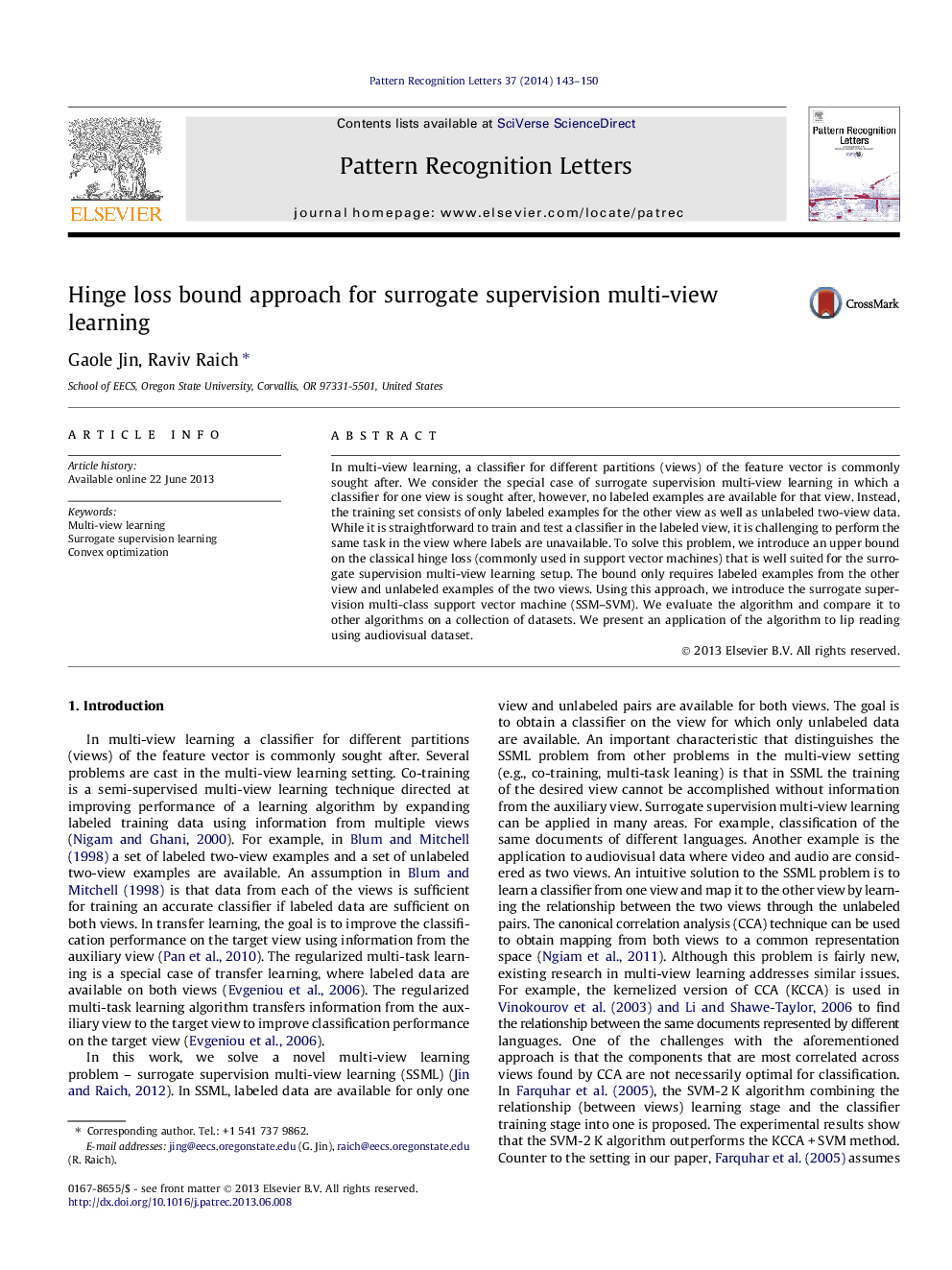| کد مقاله | کد نشریه | سال انتشار | مقاله انگلیسی | نسخه تمام متن |
|---|---|---|---|---|
| 534552 | 870265 | 2014 | 8 صفحه PDF | دانلود رایگان |
• We present the surrogate supervision multi-view learning (SSML) problem setup.
• We present a hinge loss bound for SSML for the binary case and for the multiclass case.
• We present performance guarantees on the bound minimizing classifier.
• We propose the SSM–SVM algorithm based on the multiclass hinge loss bound.
• We compare the SSM–SVM algorithm with SVM-2k, co-regularization, C4A, CCA + SVM, and label-transfer learning.
In multi-view learning, a classifier for different partitions (views) of the feature vector is commonly sought after. We consider the special case of surrogate supervision multi-view learning in which a classifier for one view is sought after, however, no labeled examples are available for that view. Instead, the training set consists of only labeled examples for the other view as well as unlabeled two-view data. While it is straightforward to train and test a classifier in the labeled view, it is challenging to perform the same task in the view where labels are unavailable. To solve this problem, we introduce an upper bound on the classical hinge loss (commonly used in support vector machines) that is well suited for the surrogate supervision multi-view learning setup. The bound only requires labeled examples from the other view and unlabeled examples of the two views. Using this approach, we introduce the surrogate supervision multi-class support vector machine (SSM–SVM). We evaluate the algorithm and compare it to other algorithms on a collection of datasets. We present an application of the algorithm to lip reading using audiovisual dataset.
Journal: Pattern Recognition Letters - Volume 37, 1 February 2014, Pages 143–150
